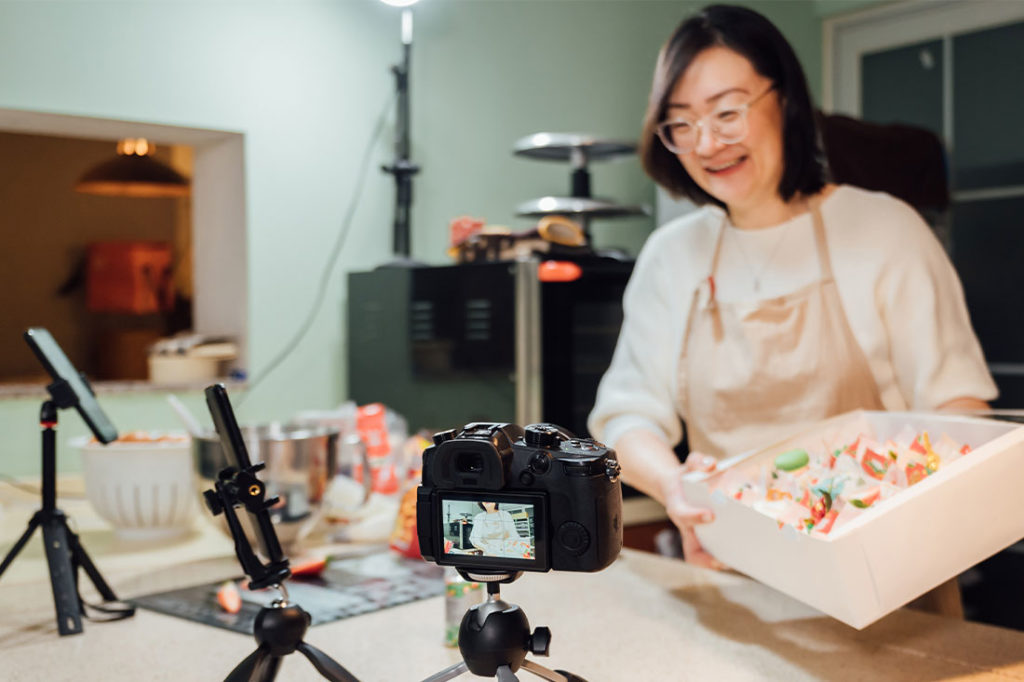In December 2021, tiktok.com became the world’s most popular web domain, bumping Google—and its entire suite of services—down to the No. 2 spot.
If the world’s most popular search engine was succeeded by a social media app, it may indicate a new era for the platforms that were once used solely for entertainment.
TikTok has quickly evolved past the 15-second dance routines and other short-form videos that ushered it into popularity. Now, the platform is a resource for life advice and how-to content. It’s even made headlines for the sheer number of people who log into the app to pick up career advice from professionals and various job consulting agencies, with many acing interviews and landing their dream jobs.
There’s a lot to be said for just how impactful social media can be, not only for regular users, but for business owners and entrepreneurs looking to get an edge in a generation that spends a majority of its time online. A Pew Research Center study found that 84% of adults ages 18 to 29 use social media. This data is especially important when considering that 74% of all consumers rely on social media for purchasing decisions, and nearly half use the platforms to discover new brands.
The next generation and incoming workforce—a bulk of your potential hires and customer base—already spend a considerable amount of time on social media apps. Now may be a good time to evaluate whether they know about you and your business.
Take Tessa White, a career coach and founder of The Job Doctor. White’s work as a corporate speaker and on-site trainer for companies slowed to a halt when the pandemic started. While reimagining a new career that focused on more intimate job coaching, her 28-year-old daughter suggested she join TikTok to share the short videos she’d made about her services.
“In 72 hours, I had 10,000 followers,” White says. “It just clicked, and I understood that Gen Z and millennials were learning differently…. At the company I left to pursue this, [the younger employees] didn’t do traditional learning. They did learning snacks, short snippets.”
White’s TikTok videos cover everything from tips to boost a resume to insider advice she gleaned from 20-plus years as an HR professional. She realized that people now prefer to consume knowledge quickly, which made her videos a quick hit. She’s received calls from the Washington Post, appeared on Good Morning America and secured a book deal with HarperCollins.
“I don’t ask for business and yet I’m beyond full,” White explains. “I’m usually two to three weeks booked out. And that’s not really a testament to how good of a marketer I am, because I’m not marketing; it’s just a testament to what people need and how effective these platforms can be.”
A Social Business
Before dismissing sites such as TikTok or Instagram, entrepreneurs and business owners should consider the opportunities social media can present to their companies and organizations.
Exposure
Nearly half of consumers use social media to discover new brands. Instagram and TikTok, for example, have pages full of recommended content that users can scroll (the Explore page and the For You and Discover pages, respectively). So what distinguishes these pages from a collage of randomized ads? Data collection. Media conglomerates keep track of content that users like, search or post. They then build personas from this data that pushes content relevant to specific users to the top of their feeds.
For businesses, this means your products or services are targeted to those who may have a vested interest in what you offer. Once a post catches their attention, they’re just one tap away from your business profile and contact information. With smaller or family-owned businesses, it’s an easy—and free—way to advertise to customers and clients beyond the scope of your reach.
Humanization
Social media has always been about connection—B2C interactions included. Gone are the days when business was strictly business. Consumers now care more about the presence of authenticity, culture and ethics in the brands they shop with, and social media leaves plenty of room for companies to be transparent.
It’s an opportunity to share a glimpse of the CEO and staff, how a product is made or a behind-the-scenes clip of a day on the job. Seeing the faces behind a business humanizes it and fosters a deeper connection with your audience.
Not every moment is meant for the internet, but the ones that capture the essence of your brand and your dedication to employee and customer interests are ideal for showing that your company is more than a label. The consumers that build a connection with your brand will trust it, and that’s a strong recipe for driving new business and repeat transactions.
Cost
Social media is mostly free to join and use, with some costs associated with marketing and paid advertising, which gives you the freedom to control how—and how often—you share your business. Plus, it’s common for posts that offer value in the form of insightful, funny, uplifting or informational content to gain traction. Users who love or benefit from your content can share it with friends or on their own pages, which increases brand exposure and can open the door to a previously untapped consumer market.
Bringing your Business to Social Media
Find Your Platform
According to Sarah Best, the CEO and chief strategist of Sarah Best Strategy, a digital marketing agency headquartered in Wisconsin, there are certain social media platforms that work best for certain industries. “If you’re a consumer-facing company, then the biggest platform size in terms of reach are Facebook and YouTube,” she says. “Instagram is great for fashion and retail, travel and tourism—anything that’s very highly visual in nature.” TikTok tends to be more playful and may not be a great fit for more formal companies. But if your audience skews younger, Best suggests experimenting with the app and working with influencers “who are closely aligned with your business priorities.”
One platform she recommends companies cut back on is Twitter. It tends not to have as much engagement for businesses and requires a consistently high volume of content. “For people who have limited time, they might not get the biggest return. But… it’s great for customer service and for live media.”
Learn the Mechanics
As with anything else in life, the best way to learn something is to practice. If your knowledge of social media is lacking, start familiarizing yourself with the platforms that fit your business or organization. Whether on a business or personal account, play around with the functions and features and observe what tactics are working for other accounts in your same industry. One way to do this is to visit different platforms’ case studies pages to get examples and analytics for marketing campaigns that landed. (An internet search for the platform name and “success stories” should take you to the correct link.)
Create Content
“What are you hoping people do as a result of seeing your social media post?” Best poses. “That’s going to help guide some of the content and activities you do on those platforms.” With these goals in mind, she advises businesses to create a content bucket list, or a checklist of regular talking points within your company, to map out on a calendar. “Having a checklist to work off of for planning content is a lot easier than just trying to come up with something in the moment,” she explains. If you have a seasonal business, such as accounting during tax prep, plug any relevant events or announcements into your calendar too.
It also helps to listen to your audience. “As companies, we feel a lot of pressure to promote our services and products,” says Best. “But if you understand what the fit is like, what the customer is looking for, you’ll be way more effective.” White often produces content based on client conversations and felt needs that are expressed among her TikTok audience. “If you wait too long to talk about a topic that’s on everybody’s mind, you’ve missed the boat,” she says.
When it comes to the type of post, both videos and photos work as long as they’re easy for your audience to understand. Although creating videos can be intimidating, Best reiterates the value of authentic content that’s created using a good quality smartphone and natural lighting.
Engage
Cultivating a relationship with your audience is a two-way street. Best recommends liking user comments, promptly answering their questions and sharing photos they’ve taken that relate to your business (with their permission). Engaging with customers and clients reinforces their inherent value to your company and encourages them to champion your brand. Says Best: “The beauty of social media is when people become excited about the work you’re doing and start to share it online themselves.”
This article originally appeared in the May/June 2022 Issue of SUCCESS magazine. Photo by MaaHoo Studio/Stocksy United.











